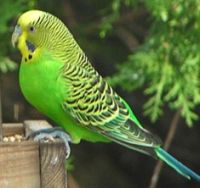In their natural habitat, they mainly feed on a great diversity of seeds. Most of these seeds, however, are barely available on the market. People can therefore not entirely meet the nutrient need of birds living in captivity. The reason for this is that birds in capitivity use far less energy, and thus need less food. This causes them to obtain smaller quantities of vitamins, mineral and other nutrients. In the long run, this shortage of nutrients can lead to diseases. It can also have a negative influence on the breeding success.
One of the most frequent shortages in parrots is vitamin A. In the USA, on the other hand, a surplus of vitamin A is frequently noted. By offering vitamin A in the form of bètacaroteen (vegatable origin) both a shortage and a surplus can be prevented. Bètacaroteen is only taken in when there is a need for it.
Two other nutrients which regularly cause problems are vitamin D and calcium. Vitamin D3 comes from animal sources and becomes active by UV light in the skin. Vitamin D2, which comes from vegetable sources, is far less effective in birds. The shortage of calcium can indirectly be caused by seeds with a high phosphor level. As these two minerals form a compound, they will both be badly admitted. A possible solution to these problems is to offer complete feeding.
(More attention will be paid to the subject in our next newsletter)
Nutrients for parrots
14februari2007
Parrots, parakeets and cockatoos are all birds belonging to the class of parrots (Psittaciformes). In the wild, these birds live in tropical and subtropical areas, but they also occur in the moderate climate of New Sealand and Australia.
